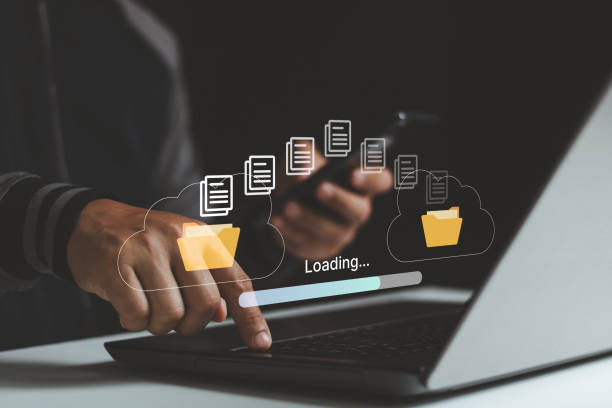Introduction to On-Page SEO and Its Importance
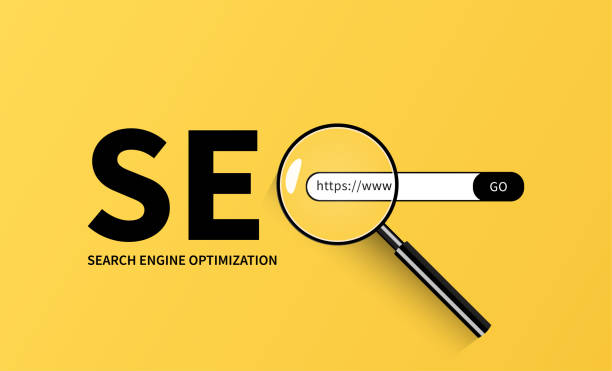
In today’s highly competitive digital world, your website’s visibility is more crucial than ever.
One of the most key approaches that helps you in this path is #On_Page_SEO or #Internal_Optimization.
This process includes all actions taken directly within your website to improve its position in search engine results pages (SERPs).
On-page SEO, unlike off-page SEO which deals with backlinks and off-site activities, focuses on your complete control over your site’s content and structure.
This educational section helps you understand why on-page SEO is the foundation of any SEO strategy’s success and how it can significantly increase your organic traffic.
Without strong on-page SEO, even with the best backlinks, you might not achieve the desired results.
The importance of search engine optimization is vital in ensuring organic traffic and attracting target audiences.
This type of SEO helps search engines better understand your content and display it to more relevant users.
Are you losing potential customers due to an unprofessional website? Rasawob is your answer! With our specialized corporate website design services:
✅ Elevate your business’s credibility and position
✅ Experience attracting more targeted customers
⚡ Act now for a free consultation!
The Role of Keywords in On-Page SEO

Correct use of keywords is the backbone of any successful on-page SEO strategy.
Choosing the right keywords helps search engines understand what your content is about and which searches it is relevant to.
For this purpose, conducting comprehensive and in-depth keyword research is essential.
This specialized section guides you on how to identify keywords with suitable search volume and reasonable competition.
Not only should you consider primary keywords, but you should also pay special attention to long-tail keywords, which are more specific and targeted searches.
Intelligently placing keywords in the title, meta descriptions, headings (H1, H2, H3), and the main body of the content, without appearing spammy or unnatural, is an art.
Keyword density is no longer as important as it once was; what matters is broad and natural semantic coverage of content around a specific topic.
This approach helps search engines understand the relevance of your content to a wider range of queries, thereby improving your on-page SEO ranking.
Content Optimization for On-Page SEO and User Experience

Content is king, but content optimized for on-page SEO is a king with a crown.
Producing high-quality, unique, informative, and engaging content for users is one of the most important factors in Google’s ranking.
This educational and analytical section discusses the importance of engaging content, the use of images and videos, and their proper organization.
Your content should not only be understandable to search engines but also valuable and trustworthy to your audience.
Organizing content using appropriate headings, short paragraphs, lists, and tables increases its readability.
On-page SEO is effective when users have a positive experience with your content.
Table 1: Key Factors for Content Optimization
| Factor | Description | Importance in On-Page SEO |
|---|---|---|
| Content Quality and Originality | Providing accurate, comprehensive, and unique information | Very High; Foundation of Ranking |
| Keyword Optimization | Natural and strategic use of relevant keywords | High; Important signal for search engines |
| Structure and Readability | Use of headings, lists, short paragraphs | High; Improves user experience and content understanding |
| Images and Video | Use of visual elements with proper alt tags and descriptions | Medium to High; Increases engagement and dwell time |
| Content Updates | Regular review and update of old content | High; Indicates content freshness and relevance |
Search engines are increasingly valuing content quality and relevance for users.
This includes user dwell time on the page, bounce rate, and content interaction.
All these factors indirectly affect your SEO and ranking.
The Importance of Technical SEO in Improving On-Page SEO
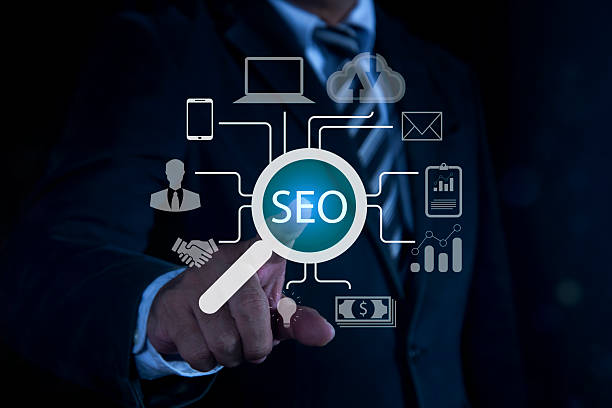
Technical SEO is one of the vital aspects of on-page SEO that is often overlooked.
This explanatory and specialized section examines how the technical structure of a website impacts its crawlability and indexability by search engines.
Site loading speed, mobile-friendliness, URL structure, Robots.txt file, XML sitemap, and the use of structured data (Schema Markup) are among the most important technical SEO factors.
A slow website or one not properly designed for mobile not only provides a poor user experience but also leads search engines to rank it lower.
Regularly checking Google Search Console to identify crawl errors and indexing issues is a crucial step in maintaining your site’s technical health.
Ensuring that search engine robots can easily discover and index all your important pages is a fundamental pillar of on-page SEO success.
Do you have an e-commerce site but your sales aren’t as expected? Rasawob solves your problem forever with professional e-commerce website design!
✅ Significant increase in conversion rates and sales
✅ Unparalleled user experience for your customers
⚡ Click to get a free consultation with Rasawob!
Effective Internal Linking Strategies
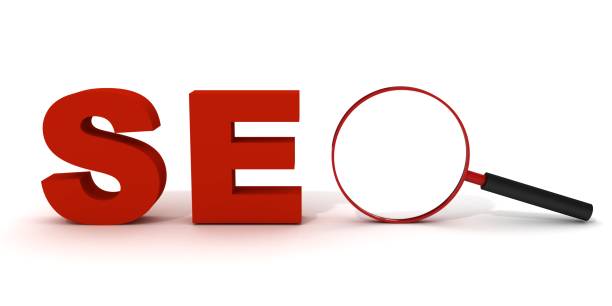
Internal Linking is one of the most powerful on-page SEO tools that allows you to direct Page Authority across different pages of your site and introduce your site structure to search engines.
This guide helps you, with a smart internal linking strategy, not only improve user experience but also help search engines better understand the importance and relevance of your pages.
By linking from high-authority pages to more important and less visible pages, you can increase their SEO value.
Using descriptive and relevant Anchor Texts provides clear signals to search engines about the destination page’s content.
Avoid linking to completely irrelevant pages and ensure that every internal link provides value to the user.
A strong internal linking structure is like a spider web that connects all your content and helps both users and search bots in site navigation.
This critical component of on-page SEO not only aids in the discovery of new pages but also encourages users to spend more time on your site.
User Experience and Its Impact on On-Page SEO
![]()
User Experience (UX) has increasingly become an important factor in SEO, with Google now considering Core Web Vitals as part of its ranking algorithm.
This analytical and explanatory section examines how UX directly and indirectly impacts on-page SEO.
Factors such as Dwell Time, Bounce Rate, and Click-Through Rate (CTR) send important signals to search engines about the quality and relevance of your content.
If users quickly leave your site or rarely click on your links, this indicates a poor user experience that can negatively affect your on-page SEO ranking.
Responsive Design for proper display on various devices, easy and intuitive navigation, and content formatted well for better readability all contribute to improving UX.
The ultimate goal of on-page SEO is to provide the best possible experience to the user, as search engines want to rank content that is valuable to users and meets their needs.
Monitoring and Data Analysis in On-Page SEO
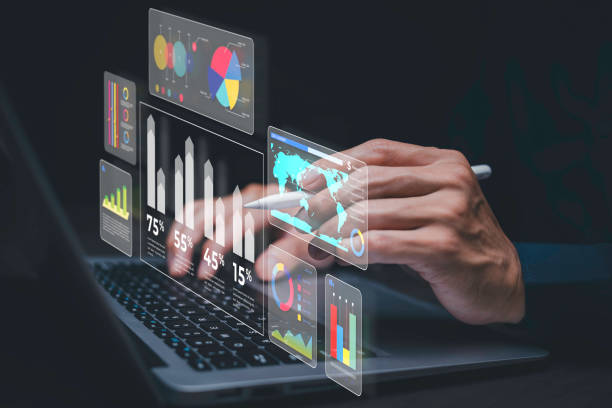
After implementing on-page SEO strategies, the next crucial step is continuous monitoring and data analysis.
This news and specialized section discusses the importance of using tools like Google Analytics and Google Search Console to evaluate your on-page SEO performance.
These tools provide valuable insights into which keywords are driving traffic, which pages are performing well or need improvement, and potential technical issues with your website.
Analyzing bounce rate, dwell time, user paths, and conversion rates helps you identify the strengths and weaknesses of your on-page SEO strategy.
Data shows whether the changes you’ve made have actually led to improved rankings and traffic.
This continuous cycle of analysis and optimization ensures long-term success in SEO.
Table 2: Analysis Tools and Important Metrics in On-Page SEO
| Tool/Metric | Application in On-Page SEO | How to Use |
|---|---|---|
| Google Analytics | Tracking traffic, user behavior, conversion rates | Reviewing traffic reports, dwell time, bounce rate |
| Google Search Console | Viewing search performance, crawl errors, indexing | Checking Coverage, Performance, Core Web Vitals reports |
| Bounce Rate | Percentage of visitors who view only one page and leave | Lower rate indicates more relevant content and better UX |
| Dwell Time | The amount of time a user stays on the page | Longer time indicates engaging and useful content |
| Keyword Position | Your pages’ ranking for specific keywords | Using the Performance report in Search Console |
Continuous monitoring and the use of these metrics allow you to adjust and optimize your on-page SEO strategies in the best possible way to always remain at the top of search results.
This is an iterative and essential process.
Common Mistakes in On-Page SEO and How to Avoid Them

Even the most experienced SEO professionals can make mistakes in on-page SEO.
Identifying and avoiding these mistakes can make a big difference in your website’s ranking.
This question-provoking and guide section examines some of the most common errors that can nullify your internal optimization efforts.
Keyword Stuffing, neglecting meta descriptions and SEO titles, not optimizing images, broken links, Duplicate Content, and slow site speed are among these mistakes.
For example, did you know that Google penalizes duplicate content? Or that unoptimized images can severely slow down your site? Avoiding these issues requires awareness and correct implementation of on-page SEO best practices.
Regular SEO audits can help you identify these problems before they have a serious negative impact on your ranking.
Each of these mistakes can be a major obstacle to your internal optimization success and must be carefully identified and resolved.
Did you know that customers’ first impression of your company is your website? Multiply your business’s credibility with a powerful corporate website from Rasawob!
✅ Exclusive and eye-catching design tailored to your brand
✅ Improved user experience and increased customer attraction
⚡ Get a free consultation!
Future Trends in On-Page SEO and Preparing for Them

The world of SEO is constantly changing, and on-page SEO is no exception.
This news and analytical section examines emerging and future trends in on-page SEO that webmasters should prepare for.
Voice search, visual search, the increasing importance of Page Experience, artificial intelligence in content understanding, and personalization of search results, are among these trends.
For example, with the increasing use of voice assistants, optimizing for conversational and more natural search becomes more important.
This means a greater focus on long-tail keywords and directly answering user questions.
Also, search engines are becoming smarter at understanding the meaning behind words, not just isolated keywords.
Therefore, producing comprehensive and authoritative content that fully covers a topic will be more crucial than ever.
Preparing for these changes means flexibility and keeping your on-page SEO knowledge up-to-date.
Practical and Fun Tips for Improving On-Page SEO

To make the process of improving on-page SEO not only effective but also fun, this educational and guide section offers you several practical and creative tips.
You can start an “SEO game” with your team and see who can make the most improvement in a month on their pages.
Or, for example, instead of seeing SEO as a dry and technical task, consider it like a “content detective” looking for clues to increase site visibility.
Use free online tools for fun and learning; for instance, play with Google Keyword Planner and find unusual keywords! Also, don’t forget storytelling in content; even in specialized content, a good story can captivate the reader and increase dwell time, which helps your on-page SEO.
On-page SEO optimization doesn’t have to be boring; with a little creativity and a playful attitude, you can turn it into an engaging and productive process.
Creativity in SEO can yield amazing results.
Frequently Asked Questions
| No. | Question | Answer |
|---|---|---|
| 1 | What is On-Page SEO? | On-page SEO refers to a set of actions taken within a website to optimize its pages and achieve a better ranking in search results. |
| 2 | What is the most important factor in On-Page SEO? | High-quality, relevant, and comprehensive content that meets user needs is the most important factor in on-page SEO. |
| 3 | What role does the Title Tag play in On-Page SEO? | The title tag is one of the most important factors that tells search engines and users what the page content is about. It should include the main keyword and be engaging. |
| 4 | How important is the Meta Description tag? | Although it doesn’t directly affect ranking, it is very effective on the click-through rate (CTR) in search results and encourages users to visit the page. |
| 5 | How is image optimization done in On-Page SEO? | By using appropriate alt tags, compressing image size to increase loading speed, and meaningfully naming the image file. |
| 6 | What is the importance of using Headings (H1, H2, H3) in On-Page SEO? | Headings help structure content, increase readability, and help search engines understand the hierarchy and sub-topics of the content. |
| 7 | What does Internal Linking mean and what are its benefits? | Internal linking means creating links between different pages of a website. This helps distribute authority, improve user navigation, and assist search engine crawling. |
| 8 | Where should the Focus Keyword be placed on the page? | The main keyword should be placed in the title tag, meta description, H1, first paragraph, and naturally throughout the text, and if possible, in the URL. |
| 9 | What is the effect of copied or duplicate content on On-Page SEO? | Duplicate content can harm site ranking and confuse search engines as to which version is original, potentially leading them to flag it as spam. |
| 10 | How important is page loading speed in On-Page SEO? | Page loading speed is an important ranking factor and directly affects user experience. Slow pages lead to increased user bounce rates. |
And other advertising services of Rasawob Advertising Agency
Smart Marketplace: An exclusive service for online growth based on SEO-driven content strategy.
Smart Social Media: A creative platform to improve customer acquisition with marketing automation.
Smart Digital Branding: A fast and efficient solution to increase sales with a focus on intelligent data analysis.
Smart UI/UX: A professional solution for user interaction with a focus on optimizing key pages.
Smart UI/UX: A new service to increase customer acquisition through an SEO-driven content strategy.
And over a hundred other services in the field of internet advertising, advertising consultation, and organizational solutions
Internet Advertising | Advertising Strategy | Advertorial
Sources
- Comprehensive Guide to On-Page SEO
- Key On-Page SEO Tips
- Improving Site Ranking with SEO
- Increasing Targeted Website Traffic
? Ready to transform your business in the digital world? Rasawob Afarin Digital Marketing Agency, specializing in WordPress website design and comprehensive online marketing strategies, paves your way to success.
📍 Tehran, Mirdamad Street, next to Bank Markazi, Southern Kazeroon Alley, Ramin Alley, No. 6



